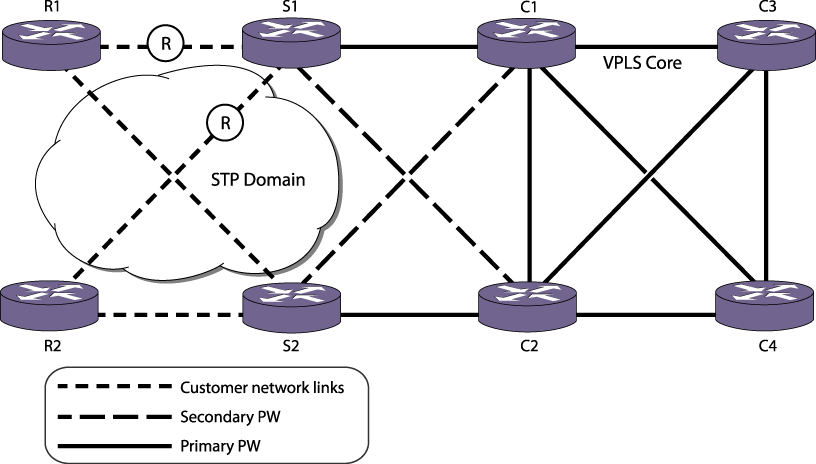The following figure shows an example network that uses STP to support redundant links to an H-VPLS network.

The topology in the preceding figure uses redundant VPLS spoke nodes (S1 and S2) and an STP customer network to protect customer access. The redundant VPLS nodes provide protection from the loss of a VPLS node, and STP provides protection from the loss of a node or link in the customer access network. Within the VPLS nodes, VPLS and STP work together to react to topology changes in the customer access VLAN.
This topology uses the restricted role feature on access switch ports to control path redundancy. In the following figure, the VPLS nodes S1 and S2 are the lowest priority STP bridges (STP prefers lower priority for root bridge election and shortest path calculation). The S1 ports connected to the R links are configured for STP restricted role mode. To prevent network loops, the restricted role mode in S1 blocks an STP enabled port when STP BPDUs with better information are received from the access network. As shown, the customer traffic uses S2 to access the VPLS network. Should one of the two restricted ports on S1 become unblocked due to a topology change, customer traffic could use both S1 and S2 to access the VPLS network.
The selection of primary and secondary PWs for this configuration is arbitrary. Therefore data paths traversing the spoke nodes S1 or S2 could use either or both core nodes C1 and C2.
In the network shown in the preceding figure, traffic destined to R1 from the VPLS core traverses C2, S2, and R1.

 Print
this page
Print
this page Email this topic
Email this topic Feedback
Feedback